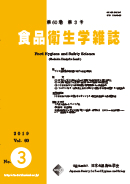
Food Hygiene and Safety Science
Scope & Guideline
Cultivating a Safer Future through Food Science
Introduction
Aims and Scopes
- Food Safety Assessment:
The journal emphasizes rigorous evaluations of food safety, including the detection and quantification of harmful substances such as toxins, pesticides, and microbial contaminants. - Analytical Method Development:
A significant focus is on developing and validating analytical methods (e.g., LC-MS/MS, HPLC) for detecting residues and contaminants in food products, ensuring reliable and rapid testing. - Microbial Risk Analysis:
Research on microbial pathogens and their impact on food safety is prevalent, including studies on the ecology of foodborne bacteria and the development of rapid detection methods. - Public Health Implications:
The journal explores the broader implications of food safety research on public health, including risk communication and consumer awareness regarding food hygiene. - Regulatory Science and Standards:
It addresses the regulatory frameworks governing food safety and the evolution of standards, providing insights into how policies can be effectively implemented.
Trending and Emerging
- Emerging Contaminants in Food:
There is a rising focus on detecting new contaminants, such as pharmaceuticals and heavy metals, in food products, highlighting the need for updated analytical methods to address contemporary food safety challenges. - Foodborne Toxins and Pathogen Detection:
Recent studies increasingly emphasize the detection and analysis of specific foodborne toxins, such as ciguatoxins and tetrodotoxins, reflecting growing concerns about seafood safety and associated health risks. - Pesticide Residue Analysis:
The examination of pesticide residues in various food products is trending, driven by heightened awareness and regulatory scrutiny regarding chemical contaminants in the food supply. - Health Foods and Dietary Supplements:
There is a notable increase in research concerning health foods and dietary supplements, particularly regarding their safety, efficacy, and potential interactions with pharmaceuticals. - Technological Innovations in Food Safety Testing:
Emerging themes include the development of rapid and innovative testing methods, such as molecular detection assays and advanced analytical techniques, to enhance food safety monitoring.
Declining or Waning
- Historical Food Safety Issues:
There seems to be a decline in research focused on historical food safety issues, such as older methods of food preservation or long-established practices, as newer technologies and methods take precedence. - General Foodborne Illness Reporting:
Publications specifically reporting on general foodborne illnesses without a novel analytical or methodological contribution have decreased, indicating a shift towards more specific studies with actionable insights. - Traditional Food Safety Practices:
Research related to traditional food safety practices is less prominent, possibly as modern techniques and scientific advancements offer more effective solutions to food safety challenges.
Similar Journals
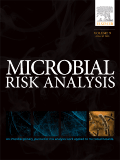
Microbial Risk Analysis
Navigating the Complexities of Public Health RisksMicrobial Risk Analysis, published by Elsevier, is a pivotal academic journal specializing in the intersection of epidemiology, infectious diseases, and medical microbiology. With an ISSN of 2352-3522 and an E-ISSN of 2352-3530, this journal has been contributing to the field since its inception in 2016 and continues to invite groundbreaking research as it converges through 2024. With a respectable impact factor, Microbial Risk Analysis holds a Q3 designation in key categories, showcasing its credibility with ranks such as #48 in Epidemiology and #124 in Infectious Diseases according to Scopus. The journal serves as an essential platform for researchers, professionals, and students alike, aiming to enhance understanding of microbial risks and their public health implications. Although it operates under a subscription model, its contents remain accessible to a broad range of interdisciplinary scholars dedicated to advancing microbial research. For those at the forefront of epidemiological and infectious disease studies, Microbial Risk Analysis represents a crucial resource for disseminating knowledge and fostering collaboration.
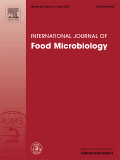
INTERNATIONAL JOURNAL OF FOOD MICROBIOLOGY
Connecting Science and Safety in Food SystemsINTERNATIONAL JOURNAL OF FOOD MICROBIOLOGY is a leading journal in the field of food safety and microbiology, published by Elsevier. With an impressive impact factor and a distinguished position, it ranks in the top quartile for both Food Science and Medicine, as well as holding a strong presence in Microbiology and Safety, Risk, Reliability, and Quality categories. The journal provides a vital platform for researchers, professionals, and students to disseminate and discuss innovative research findings and applications that address the complexities of food microbiology. Operating from its headquarters in the Netherlands, this journal not only facilitates access to high-quality scholarly articles but also encourages the development of interdisciplinary approaches to tackle current challenges in food safety and public health. Since its inception in 1984, the journal has continually evolved, ensuring that it remains at the forefront of scientific inquiry, making it a crucial resource for anyone engaged in the food sciences.
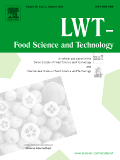
LWT-FOOD SCIENCE AND TECHNOLOGY
Bridging the gap between research and industry.LWT - Food Science and Technology is a premier academic journal published by Elsevier, specializing in the multifaceted fields of food science and technology. With a distinguished presence since its inception in 1973, this journal has evolved to become a vital resource for researchers and professionals aiming to advance knowledge in food safety, preservation, processing, and sensory analysis. Currently ranked in the Q1 quartile of food science journals, it holds an impressive Scopus ranking of 22 out of 389 in the Agricultural and Biological Sciences category, placing it in the 94th percentile. While certain articles may be available via subscription, LWT is committed to disseminating cutting-edge research that enhances food quality and innovation. This journal not only serves as a critical platform for the exchange of scientific ideas but also addresses contemporary challenges in food technology, ensuring that it remains essential for scholars, industry professionals, and students alike seeking to contribute to and stay abreast of advancements in the field.

Food Frontiers
Innovating Food Production for Tomorrow's NeedsFood Frontiers, an esteemed publication in the Food Science domain, is proudly published by WILEY. Launched as an Open Access journal in 2020, it aims to facilitate the dissemination of high-quality research that influences contemporary food science and technology. The journal, with an E-ISSN of 2643-8429, has rapidly ascended to a Category Quartile ranking of Q1 in the Food Science category as of 2023, and boasts an impressive Scopus rank of #31 out of 389 in Agricultural and Biological Sciences, placing it in the 92nd percentile. The journal's mission is to explore innovative approaches to food production, safety, and sustainability, making it an essential resource for researchers, industry professionals, and students eager to stay at the forefront of food science advancements. With a commitment to open accessibility, Food Frontiers fosters collaboration and knowledge sharing across the globe, addressing the critical challenges and trends in feeding the world sustainably.

JOURNAL OF THE JAPANESE SOCIETY FOR FOOD SCIENCE AND TECHNOLOGY-NIPPON SHOKUHIN KAGAKU KOGAKU KAISHI
Nurturing Knowledge in Food Science and TechnologyWelcome to the JOURNAL OF THE JAPANESE SOCIETY FOR FOOD SCIENCE AND TECHNOLOGY-NIPPON SHOKUHIN KAGAKU KOGAKU KAISHI, a pivotal platform for the advancement of food science and technology. Published by the Japan Society for Food Science and Technology, this esteemed journal has been contributing to the field since 1995 and continues to publish innovative research and reviews that foster knowledge and collaboration among researchers, professionals, and students interested in food science. Although it currently holds a Q4 ranking within the Food Science category, the journal's commitment to disseminating valuable insights showcases its potential as a resource for emerging trends and applications in food technology. While it does not offer open access options, it maintains a rigorous peer-review process to ensure the quality of its content. As this journal progresses into its convergence years through 2024, it remains an essential resource for those passionate about exploring the intersections of food science and technology in Japan and beyond.
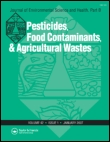
JOURNAL OF ENVIRONMENTAL SCIENCE AND HEALTH PART B-PESTICIDES FOOD CONTAMINANTS AND AGRICULTURAL WASTES
Transforming knowledge into action for environmental well-being.JOURNAL OF ENVIRONMENTAL SCIENCE AND HEALTH PART B-PESTICIDES FOOD CONTAMINANTS AND AGRICULTURAL WASTES, published by Taylor & Francis Inc, stands as a crucial platform for advancing knowledge in the intersection of environmental science, food safety, and agricultural practices. With an ISSN of 0360-1234 and E-ISSN 1532-4109, this journal has been disseminating significant research since 1976 and continues its invaluable contributions through 2024. Recognized in notable quartiles such as Q2 in Food Science and Q3 in both Medicine and Pollution, it reflects a robust academic stature, ranking in the top half of Scopus categories, specifically in Agricultural and Biological Sciences at rank #158/389 and Environmental Science at rank #82/167. This makes it an essential resource for researchers, professionals, and students who are focused on understanding and mitigating the impacts of pesticides, food contaminants, and agricultural waste. Although it is not an open access journal, the depth and quality of its published work offer a wealth of information for those striving to innovate in sustainable practices and public health safety. Engage with the latest findings and discussions that shape the future of environmental health and food science.

FOOD TECHNOLOGY
Pioneering Solutions for a Sustainable Food IndustryFOOD TECHNOLOGY, published by the Institute of Food Technologists, is a pivotal journal dedicated to the advancement of knowledge and innovation in the food industry. With its ISSN 0015-6639, this esteemed publication aims to bridge the gap between food science research and practical applications, addressing ongoing challenges and technological advancements in food production, preservation, and safety. Although currently not an open-access journal, FOOD TECHNOLOGY continues to serve as a critical resource for food scientists, engineers, and industry professionals seeking to stay at the forefront of emerging trends and research in the field. Recognized for its impact within the academic community, it holds a Q4 ranking in Chemistry, Food Science, and Industrial and Manufacturing Engineering categories, reflecting its importance in disseminating valuable information. Researchers and practitioners alike will find in its pages a wealth of insights that can influence practices and policies in food technology. The journal's editorial team, committed to upholding rigorous standards, ensures that each issue is a thorough representation of high-quality research and a valuable addition to the body of food science literature.
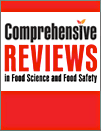
COMPREHENSIVE REVIEWS IN FOOD SCIENCE AND FOOD SAFETY
Navigating the Landscape of Food Science with AuthorityCOMPREHENSIVE REVIEWS IN FOOD SCIENCE AND FOOD SAFETY, published by Wiley, is a premier journal dedicated to advancing the understanding of food science and safety through thorough and critical reviews. With an impressive Q1 ranking in the field of Food Science and a notable Scopus ranking of #4 out of 389 in Agricultural and Biological Sciences, this journal occupies a vital position within the academic community. Its rigorous approach to publishing comprehensive reviews serves as an invaluable resource for researchers, professionals, and students aiming to stay abreast of current trends and advancements in the food sector. Although the journal does not offer open access options, its contributions from 2002 through 2024 reflect a commitment to high-quality scholarship and knowledge dissemination. Researchers looking to elevate their understanding of food safety and related disciplines will find this journal an essential addition to their academic repertoire.

Journal of Food Safety and Food Quality-Archiv fur Lebensmittelhygiene
Fostering Critical Dialogues in Food Safety and Quality Science.The Journal of Food Safety and Food Quality - Archiv für Lebensmittelhygiene is a crucial publication in the realms of food safety, quality assurance, and hygiene, published by M H SCHAPER GMBH CO KG in Germany. As a respected journal with editions dating back to 1959, it has played an integral role in disseminating research, reviews, and case studies that impact policy and practice within the food science community. Despite being classified in the Q4 category across various domains such as Food Science, Health, Toxicology, and Microbiology as of 2023, its contributions continue to foster critical discussions, innovations, and advancements in understanding food safety standards and practices. The journal does not currently offer open access, a decision that may influence the dissemination of knowledge among researchers and practitioners. However, its archival value and historical insights remain significant for those invested in the scientific and regulatory landscapes of food quality and safety.
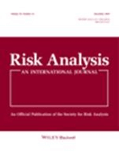
RISK ANALYSIS
Advancing Knowledge in Risk Assessment and ManagementRISK ANALYSIS is a premier journal published by Wiley, focusing on the critical intersection of safety, risk, reliability, and quality within the fields of engineering and physiology. With a strong standing reflected in its Q1 category ranking in Safety, Risk, Reliability and Quality and Q2 in Physiology (medical), this journal is a vital resource for researchers, professionals, and students eager to stay informed on the latest methodologies, theories, and applications surrounding risk assessment and management. Since its inception in 1981, RISK ANALYSIS has been instrumental in shaping the discourse in its fields, garnering a robust reputation verified by its high rankings on Scopus, where it is positioned in the 85th percentile in Safety and the 77th percentile in Medicine. Though it does not currently offer Open Access options, the journal remains essential for those committed to advancing their understanding of risks associated with complex systems. For more insights, RISK ANALYSIS is available to readers throughout its converged years extending to 2024, solidifying its role as a foundational journal for impactful research.